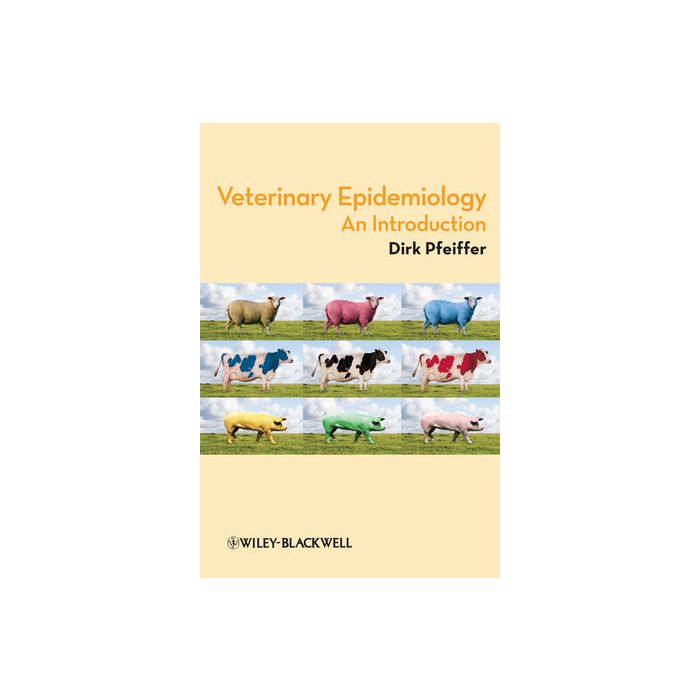Veterinary Epidemiology: An Introduction [Pfeiffer - Wiley - Blackwell]

- ISBN/EAN
- 9781405176941
- Editore
- Wiley - Blackwell
- Formato
- Brossura
- Anno
- 2009
- Pagine
- 150
Disponibile
43,20 €
Dirk Pfeiffer is Professor of Veterinary Epidemiology at the Royal Veterinary College in London, UK. He has designed and taught international training courses in epidemiology all over the developed and developing world, from Australia to Vietnam. He currently provides scientific expertise to the European Food Safety Authority, the European Commission, DEFRA, the United Nation’s Food and Agriculture Organization and various national governments. He has over 20 year’s practical experience in the field and continues to work on some of the most high profile cases of global animal health.
Dirk brings his wealth of knowledge to this concise introduction to the subject. This book covers all the core principles you need to know for your epidemiology course, including:
The basic epidemiological concepts
Understanding and designing epidemiological studies
Measuring cause-effect relationships
Statistical analysis and bias
Sampling methodology
Interpreting diagnostic tests
The basic concepts of disease control and eradication
The book will also be of use to animal health professionals who need an easy-to-understand introduction to the subject
Maggiori Informazioni
| Autore | Pfeiffer Dirk |
|---|---|
| Editore | Wiley - Blackwell |
| Anno | 2009 |
| Tipologia | Libro |
| Lingua | Inglese |
| Indice | 1 Introduction 1 Current and future challenges in animal health and veterinary public health 1 Veterinary epidemiology 3 2 General epidemiological concepts 5 Introduction 5 Temporal and spatial patterns of disease 7 Determinants of health and disease 11 Causation 13 3 Quantifying disease occurrence 19 Introduction 19 Incidence risk 20 Incidence rate 21 Prevalence 22 Comparison of prevalence and incidence measures 23 Miscellaneous measures of disease occurrence 25 Survival or time-to-event 25 Standardisation of occurrence measures 28 4 Designing epidemiological studies 33 Introduction 33 Descriptive studies 34 Experimental studies 35 Observational studies 37 Comparison of study types 42 5 Measuring effects 43 Introduction 43 Measures of strength of association 44 Measures of impact 46 Comparing epidemiological measures of effect 48 6 Considering error and cause–effect 51 Introduction 51 Systematic error 52 Random error 53 Interaction or effect modification 59 From association to cause and effect 61 7 Sampling of animal populations 63 Introduction 63 Probability or non-probability sampling 65 Random sampling strategies 66 Sample size calculation 72 8 Interpreting diagnostic tests 83 Introduction 83 Diagnostic tests 84 Evaluating diagnostic tests 86 Test performance and interpretation at the individual animal level 89 Prevalence estimation and diagnostic tests 91 Clinical perspective on interpretation of diagnostic tests 92 Methods for choosing cut-off values 93 Likelihood ratios 96 Combining diagnostic test results 100 Decision analysis 105 9 Informing disease control and eradication 109 Introduction 109 Risk analysis 110 Assessment of herd health and productivity 113 Disease surveillance and monitoring 114 Outbreak investigation 116 Modelling 118 Computerised information systems 120 References 123 Index 131 |
Questo libro è anche in:
